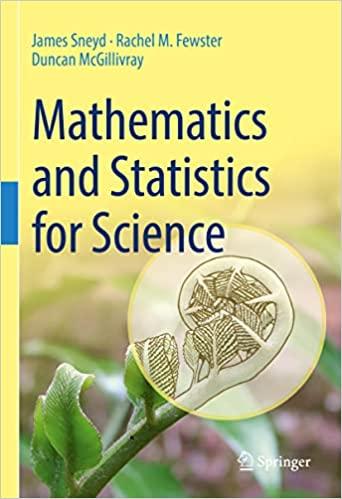Muhtar et al (2021) published a Leontief input-output model of integrated farming in Karehkel village in Indonesia.
Question:
Muhtar et al (2021) published a Leontief input-output model of integrated farming in Karehkel village in Indonesia. Their model of integrated farming had four compartments; vegetables
(mostly lettuce, cai xin and kale), livestock (mostly rabbits and sheep), bokashi (a kind of composted fertiliser based around animal manure), and silage (a kind of fodder for livestock). The interactions between the compartments are relatively simple.
• Vegetables are used to produce silage.
• Silage is used to feed the livestock.
• Livestock manure is used to make bokashi.
• Bokashi is used to fertilise the vegetable crop.
The input-output table for their model is shown in Table 11.2.
As we have seen previously (see, for example, Table 11.1) each column describes how each compartment depends on the compartment in the top row, while each row lists how the outputs of one compartment are used by the other compartments
a. Before we can use this input-output table we need to convert each value to a cost per unit production. We do this by That is, we want a relative cost, not an absolute cost. The lowest row of the table shows the total cost of production, and so to get the cost of production per unit of output you need to divide the number of units by the total cost.
dividing each column by the column total (shown in the bottom row). Show that this gives the consumption matrix A =
0 0 0 0.3 0 00.37 00.087 0 0 0 00.045 0 0
, together with the demand vector d =10,709 275 16.8 23.4
.
b. Find the required outputs of each compartment to satisfy this input-output tab
Step by Step Answer:

Mathematics And Statistics For Science
ISBN: 9783031053177
1st Edition
Authors: James Sneyd, Rachel M. Fewster, Duncan McGillivray






